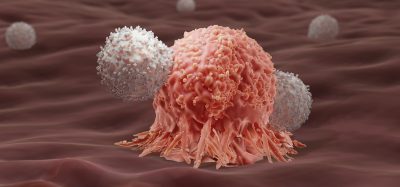Targeting MAPK and PI3K/mTOR pathways halts ovarian cancer growth
Posted: 16 July 2025 | Drug Target Review | No comments yet
A new preclinical study has combined two experimental drugs that effectively block ovarian tumour growth – a strategy that could lead to new treatments against this genetically complex cancer.


A preclinical study led by Weill Cornell Medicine has found that combining two experimental drugs – rigosertib and a PI3K/mTOR inhibitor – can both obstruct tumour growth and block resistance in ovarian cancer. The findings, published in Cell Reports Medicine, offer a new approach for treating this genetically challenging cancer.
Targeting pathways instead of mutations
Ovarian cancer is difficult to treat because it is driven by a wide variety of genetic mutations – making it hard to develop drugs aimed at specific common mutations. Instead of focusing on individual gene changes, the research team applied a novel precision medicine strategy based on the activation of growth signalling pathways -unique to ovarian tumour cells.
Using this pathway-level information, they identified a drug combination that selectively targets ovarian tumour cells and significantly reduces tumour growth in preclinical models.
Ovarian cancer: a challenging landscape
According to the National Cancer Institute, nearly 250,000 women in the United States are living with ovarian cancer, with approximately 20,000 new cases diagnosed annually. Standard treatment typically involves surgery followed by chemotherapy. However, recurrence is common, and the five-year survival rate remains at 50 percent -highlighting the urgent need for improved therapies.


Ovarian cancer cells dividing. Credit: ecancer
Hyperactive pathways reveal a new drug target
The research team analysed current ovarian tumour datasets and found that many mutations converge on hyperactivation of the MAPK cell-growth pathway. They then screened multiple drug compounds across 32 human cancer cell models and identified that an MAPK pathway drug, called rigosertib, showed strong efficacy against ovarian cancer.
However, while rigosertib inhibits MAPK, the experiments showed that this leads to partial de-repression of the PI3K/mTOR pathway – a known resistance mechanism in tumour cells.
Dual pathway blockade overcomes resistance
To address this, the researchers tested combinations of rigosertib with various PI3K/mTOR inhibitors, aiming to block both pathways simultaneously. Their results showed that although rigosertib alone outperformed standard platinum-based chemotherapy in preclinical models, the combination therapy was even more effective.
Dr Benjamin Hopkins, assistant professor of research in physiology and biophysics at Weill Cornell Medicine, emphasised the significance of these findings: “We’re also working to identify more of these tumour specific dependencies in ovarian cancer that could offer further options for second-line therapy – because currently there are no curative second-line therapies available for this cancer.”
Looking ahead
The study’s success may encourage drug developers to explore this combination strategy further – potentially including drugs that act similarly to rigosertib but with greater potency. This approach could expand effective treatment options in the future, not only for ovarian cancer, but also for other genetically diverse cancers.
“We’re excited by the potential of using this combination in ovarian cancer, and we think this approach will be useful to identify effective treatments against other cancers that don’t contain highly recurrent targetable mutations,” said Dr Hopkins.
Related topics
Cancer research, Drug Discovery, Drug Discovery Processes, In Vitro, In Vivo, Molecular Targets, Oncology, Pathology & Molecular Medicine, Precision Medicine, Screening, Targets, Therapeutics, Translational Science
Related conditions
Cancer, Ovarian cancer
Related organisations
National Cancer Institute, Weill Cornell Medicine








